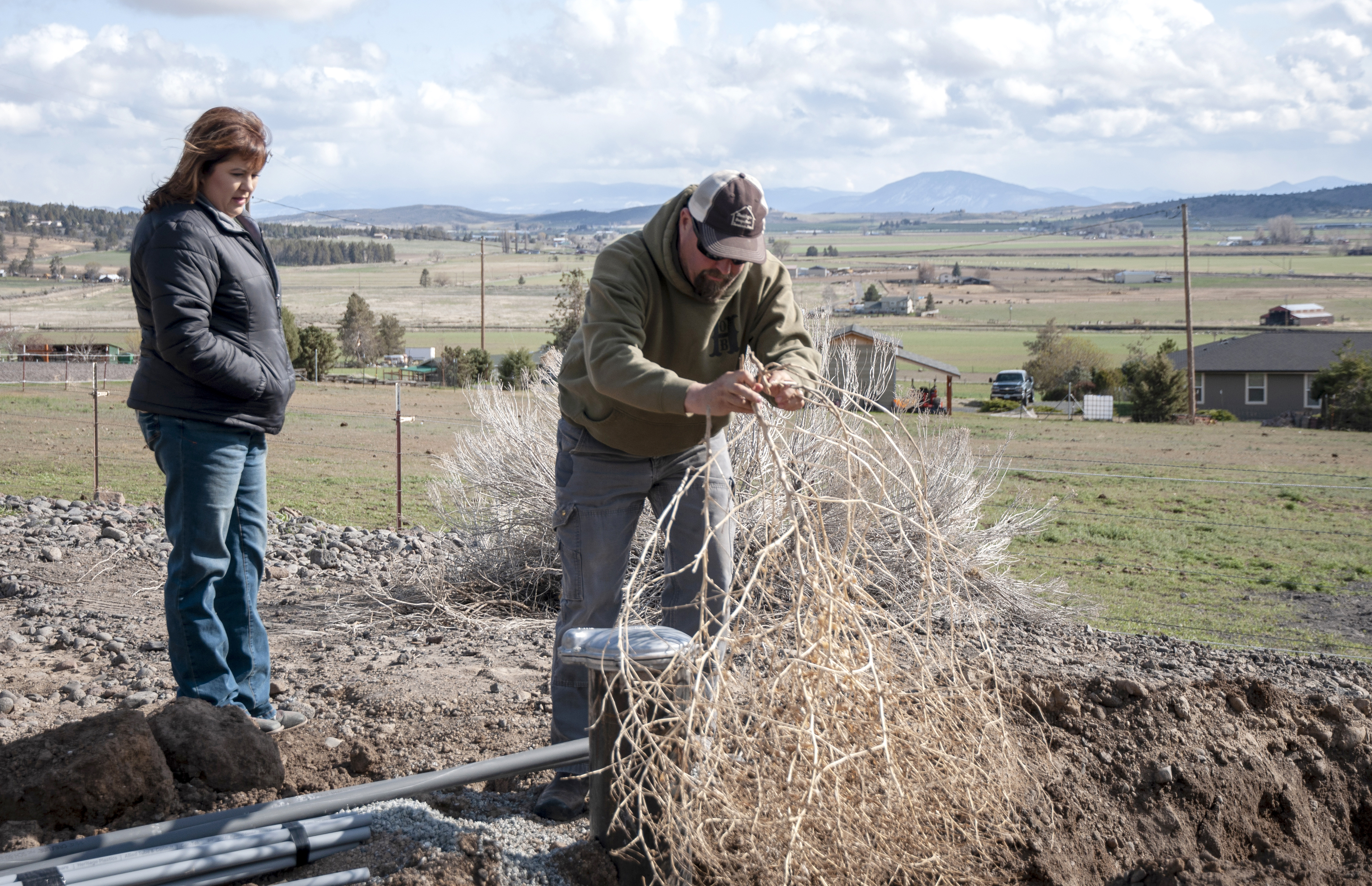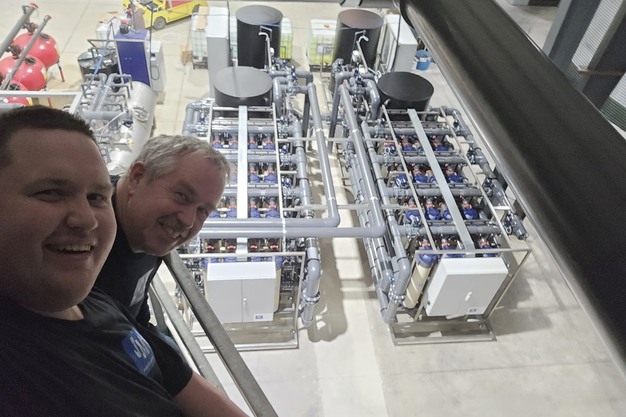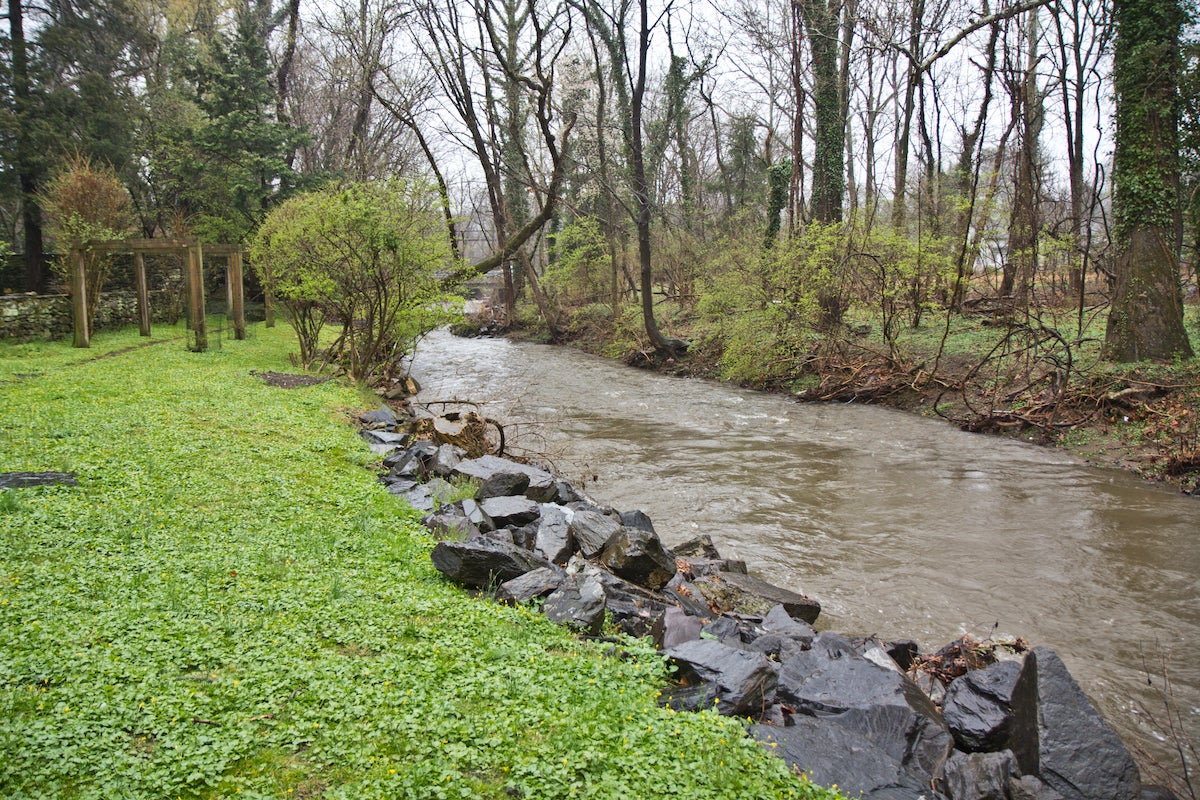What to know about Salem’s water emergency and what’s being done to prevent it – NPR for Oregonians

Report on the City of Salem’s Proactive Water Infrastructure Management
Executive Summary
The City of Salem has issued a preemptive drinking water emergency declaration to expedite critical infrastructure upgrades. This measure is a strategic response to a planned reservoir drawdown by the U.S. Army Corps of Engineers, which poses a significant challenge to the city’s water treatment capabilities. The situation highlights a complex interplay between several United Nations Sustainable Development Goals (SDGs), primarily the need to ensure SDG 6: Clean Water and Sanitation for approximately 200,000 residents, while accommodating federal actions aimed at promoting SDG 14: Life Below Water and SDG 15: Life on Land. The city’s actions are a direct effort to build resilient infrastructure, in line with SDG 9: Industry, Innovation, and Infrastructure and SDG 11: Sustainable Cities and Communities, thereby preventing a future crisis.
Background: A Conflict Between Environmental Restoration and Water Security
The Detroit Reservoir Drawdown: A Measure for SDG 14 and SDG 15
The U.S. Army Corps of Engineers plans to conduct a deep drawdown of the Detroit Lake Reservoir in the fall of 2026. This action is mandated by a 2024 biological opinion from the National Marine Fisheries Service.
- Primary Objective: To improve downstream passage for endangered fish species, specifically baby salmon, enhancing their journey to the ocean.
- SDG Alignment: This initiative directly supports the targets of SDG 14 (Life Below Water) and SDG 15 (Life on Land) by taking action to protect and restore freshwater ecosystems and halt biodiversity loss.
Projected Impact on Water Treatment and SDG 6
The drawdown is expected to release decades of accumulated sediment from the reservoir into the North Santiam River, Salem’s primary drinking water source. This will cause a dramatic increase in water turbidity (sediment levels).
- Technical Challenge: The city’s Geren Island water treatment plant utilizes a slow sand filtration method, which is highly effective for relatively clean water but cannot process water with the high turbidity levels anticipated.
- Threat to SDG 6: This operational limitation poses a direct threat to the city’s ability to provide a continuous and safe water supply, a core target of SDG 6 (Clean Water and Sanitation). A potential shortage would affect residents and critical services like firefighting.
Strategic Response: Enhancing Infrastructure Resilience (SDG 9 & SDG 11)
Rationale for the Emergency Declaration
The emergency declaration is a procedural measure, not a response to a current crisis. It allows the city to bypass standard, lengthy government contracting timelines to ensure infrastructure upgrades are completed before the 2026 drawdown. As stated by Jason Pulley, the city’s utility planning manager, “We are doing this to avoid a state of emergency.” This proactive risk mitigation aligns with SDG 11.5, which aims to protect communities from water-related disasters.
Planned Infrastructure Upgrades
An estimated $8 million is allocated for projects designed to build resilient and sustainable infrastructure, a key component of SDG 9. The planned upgrades include:
- Developing Alternative Water Sources: Construction of new groundwater wells to diversify the water supply and reduce sole reliance on the river.
- Improving Primary Treatment Facility: Resanding filters at the Geren Island plant to better manage increased sediment loads.
- Enhancing Emergency Capacity: Adding another pump at the city’s emergency water supply station in Keizer.
Navigating a Multi-Goal Sustainability Challenge
Ensuring Clean Water and Sanitation (SDG 6)
To guarantee uninterrupted access to clean water, the city is implementing a multi-source strategy to supplement its primary supply during the high-turbidity period. This approach is fundamental to upholding SDG 6 and includes:
- Utilizing existing groundwater resources at the Geren Island treatment plant.
- Activating an aquifer storage and recovery system.
- Leveraging a water intertie with the neighboring city of Keizer.
The Role of Partnerships for the Goals (SDG 17)
This situation involves a complex network of stakeholders, including the City of Salem, the U.S. Army Corps of Engineers, the National Marine Fisheries Service, and the U.S. Congress. The city is actively engaging its congressional delegation to secure federal funding to help offset the costs of these federally mandated environmental actions. This collaboration exemplifies SDG 17, which emphasizes the need for multi-stakeholder partnerships to achieve sustainable development objectives and resolve conflicts between different goals.
Conclusion and Forward Outlook
The City of Salem’s emergency declaration is a forward-thinking measure to safeguard its water supply and ensure compliance with SDG 6. The planned infrastructure investments are not merely a short-term fix but a strategic enhancement of the city’s long-term resilience, in line with SDG 9 and SDG 11. This case serves as a critical example of the challenges local governments face in balancing essential public services with broader environmental mandates, underscoring the necessity of robust partnerships (SDG 17) to navigate the interconnected landscape of the Sustainable Development Goals.
Analysis of Sustainable Development Goals (SDGs) in the Article
1. Which SDGs are addressed or connected to the issues highlighted in the article?
The article discusses issues that are directly and indirectly connected to several Sustainable Development Goals. The primary focus is on water management, but this intersects with urban resilience, infrastructure development, and ecosystem protection.
-
SDG 6: Clean Water and Sanitation
This is the most prominent SDG in the article. The entire narrative revolves around the City of Salem’s efforts to ensure a continuous supply of safe and clean drinking water for its residents in the face of a potential crisis caused by high turbidity from a reservoir drawdown.
-
SDG 11: Sustainable Cities and Communities
The article addresses the resilience of the City of Salem. The city is proactively managing a risk to its essential services (drinking water and firefighting capabilities) that affects approximately 200,000 residents. The emergency declaration and infrastructure upgrades are measures to make the community safer and more resilient to water-related disruptions.
-
SDG 14: Life Below Water
The underlying reason for the reservoir drawdown, which creates the water quality problem for Salem, is to protect aquatic life. The article explicitly states the measure is being done “to improve downstream passages for endangered fish” and to help “flush baby salmon through the dams and onward in their journey to the ocean.” This connects directly to the conservation and sustainable use of freshwater ecosystems and their biodiversity.
-
SDG 9: Industry, Innovation and Infrastructure
The challenges and solutions described are fundamentally about infrastructure. The article details the need for “key improvements to its drinking water plant,” developing “alternative drinking water sources,” and making “improvements at the primary treatment facility.” This involves building resilient infrastructure to support human well-being.
2. What specific targets under those SDGs can be identified based on the article’s content?
Based on the issues discussed, several specific SDG targets can be identified:
-
SDG 6: Clean Water and Sanitation
- Target 6.1: “By 2030, achieve universal and equitable access to safe and affordable drinking water for all.” The city’s actions are aimed at ensuring the 200,000 residents continue to have access to water that is “clean and safe to drink,” preventing a potential shortage.
- Target 6.3: “By 2030, improve water quality by reducing pollution…” The problem is an anticipated spike in “turbidity,” which is the “measure of sediment in the water.” The upgrades to the treatment plant are a direct response to manage this form of water pollution to maintain water quality.
- Target 6.5: “By 2030, implement integrated water resources management at all levels…” The situation involves a complex interplay between different governing bodies (City of Salem, U.S. Army Corps of Engineers, National Marine Fisheries Service) and competing needs (urban water supply vs. ecosystem restoration for fish), which is a clear example of integrated water resources management.
- Target 6.b: “Support and strengthen the participation of local communities in improving water and sanitation management.” The Salem City Council’s unanimous approval of the emergency declaration and the public communication efforts described by Jason Pulley represent local government and community involvement in water management decisions.
-
SDG 11: Sustainable Cities and Communities
- Target 11.5: “By 2030, significantly reduce… the number of people affected… caused by disasters, including water-related disasters…” The city is taking preemptive action “to avoid a state of emergency” and protect its 200,000 residents from a potential drinking water shortage, which qualifies as a water-related disaster. The article also notes the need to maintain water reserves for “firefighting capabilities,” a key disaster risk reduction measure.
-
SDG 14: Life Below Water
- Target 14.2: “By 2020, sustainably manage and protect marine and coastal ecosystems to avoid significant adverse impacts… and take action for their restoration…” The drawdown of the Detroit Lake Reservoir is an action taken specifically “to improve downstream passages for endangered fish” and create a “natural flow that can flush baby salmon through the dams.” This is a direct action aimed at restoring a freshwater ecosystem to aid species migration.
-
SDG 9: Industry, Innovation and Infrastructure
- Target 9.1: “Develop quality, reliable, sustainable and resilient infrastructure… to support… human well-being…” The article focuses on the “two major infrastructure challenges facing Salem,” which are being addressed by an $8 million investment to upgrade the water system, including “resanding filters,” building “new groundwater wells,” and adding another pump to ensure the system is resilient and reliable.
3. Are there any indicators mentioned or implied in the article that can be used to measure progress towards the identified targets?
Yes, the article contains several quantitative and qualitative indicators that can be used to measure progress.
-
For SDG 6 (Clean Water and Sanitation):
- Population with access to safe drinking water: The article specifies that “About 200,000 residents” would be affected, providing a clear number for the population whose water access is being secured.
- Water quality parameters: The article explicitly mentions “turbidity” as the key concern and provides a specific metric: “spikes as high as 1,000 NTU (Nephelometric Turbidity Units).” This is a direct indicator of water quality.
- Water storage capacity: The city has “roughly 136 million gallons of storage in our system,” which is a measure of the available freshwater supply and reserves.
-
For SDG 11 (Sustainable Cities and Communities):
- Investment in disaster risk reduction: The “estimated cost to prepare and upgrade the city’s water system… is roughly $8 million.” This financial figure is an indicator of the investment being made to build resilience.
- Emergency preparedness: The article notes that “50% of that [storage] needs to be dedicated to firefighting capabilities,” an indicator of the city’s preparedness for other disasters like large fires.
-
For SDG 14 (Life Below Water):
- Measures to protect endangered species: The primary indicator is the implementation of the “deep drawdown of Detroit Lake Reservoir,” which is a specific action taken to benefit “endangered fish” and “baby salmon.” The success of this action would be measured by fish population and migration data, which is implied by the action’s purpose.
-
For SDG 9 (Industry, Innovation and Infrastructure):
- Investment in infrastructure: The “$8 million” cost is a direct indicator of financial investment in infrastructure.
- Specific infrastructure upgrades: Progress can be measured by the completion of the projects mentioned: “building new groundwater wells,” “adding another pump at the city’s emergency water supply station,” and “resanding filters.”
4. Summary Table of SDGs, Targets, and Indicators
| SDGs | Targets | Indicators Identified in the Article |
|---|---|---|
| SDG 6: Clean Water and Sanitation |
6.1: Achieve universal access to safe drinking water.
6.3: Improve water quality by reducing pollution. 6.5: Implement integrated water resources management. |
– Population served: 200,000 residents. – Water quality maintained as “clean and safe.” – Turbidity levels (concern over spikes of 1,000 NTU). – Coordination between City of Salem, Army Corps of Engineers, and National Marine Fisheries Service. |
| SDG 9: Industry, Innovation and Infrastructure | 9.1: Develop quality, reliable, sustainable and resilient infrastructure. |
– Investment of $8 million for system upgrades. – Specific projects: new groundwater wells, new pump, resanding filters. – Development of alternative water sources (groundwater, aquifer storage). |
| SDG 11: Sustainable Cities and Communities | 11.5: Reduce the impact of water-related disasters. |
– Proactive measures to avoid a “state of emergency” for 200,000 people. – Dedicated water storage for firefighting (50% of 136 million gallons). – Economic investment ($8 million) to mitigate disaster risk. |
| SDG 14: Life Below Water | 14.2: Protect and restore marine and coastal ecosystems. |
– Implementation of reservoir drawdown to improve passage for “endangered fish.” – Action to create a “natural flow” to help “baby salmon” migrate. |
Source: klcc.org

What is Your Reaction?
 Like
0
Like
0
 Dislike
0
Dislike
0
 Love
0
Love
0
 Funny
0
Funny
0
 Angry
0
Angry
0
 Sad
0
Sad
0
 Wow
0
Wow
0












































































